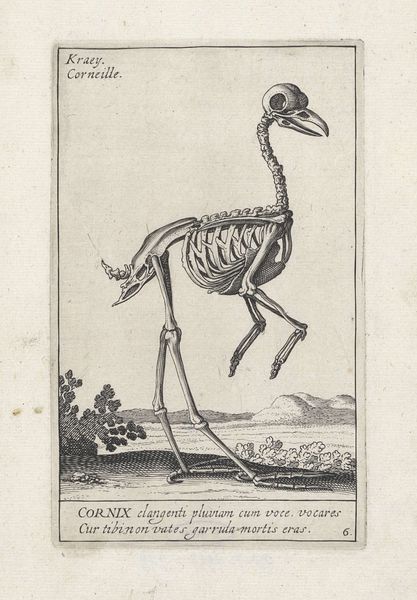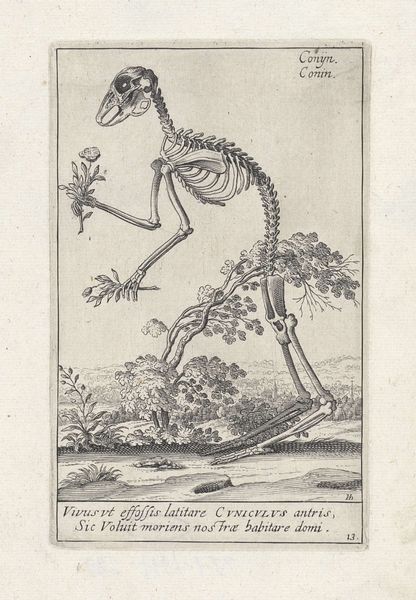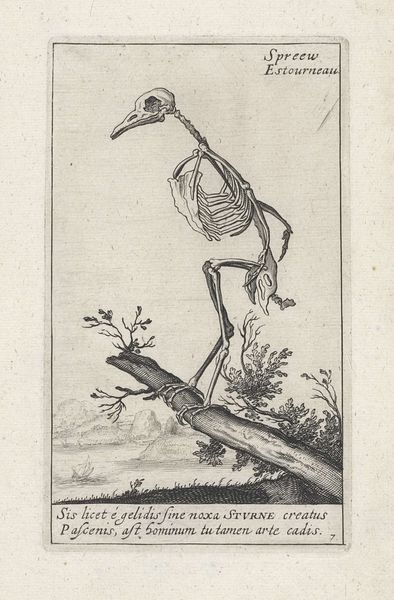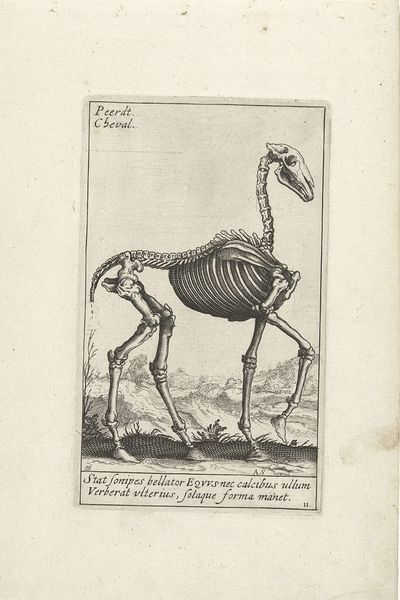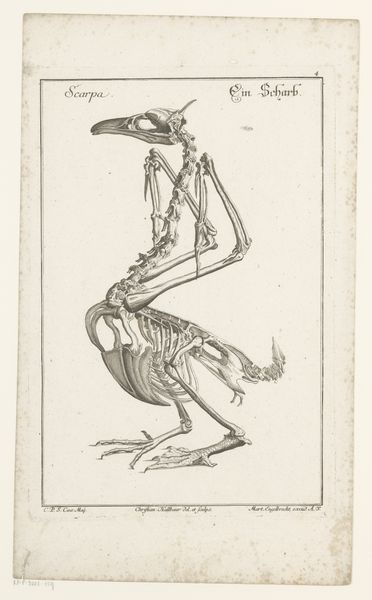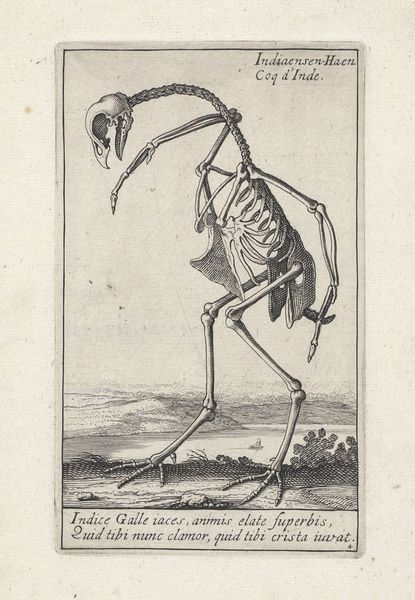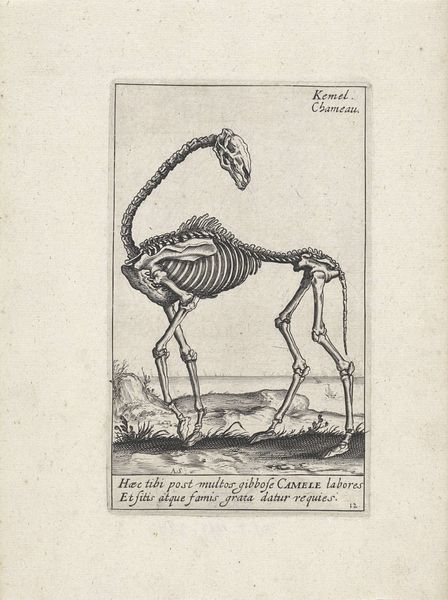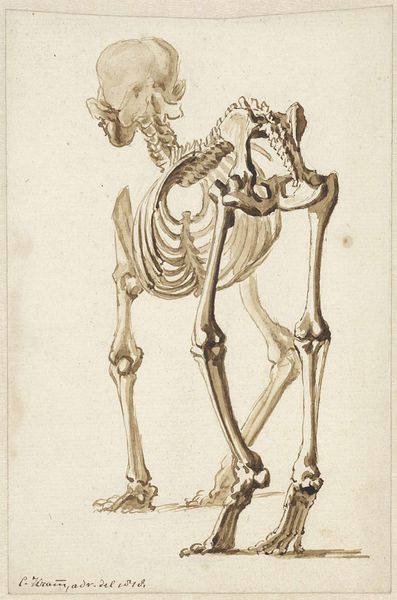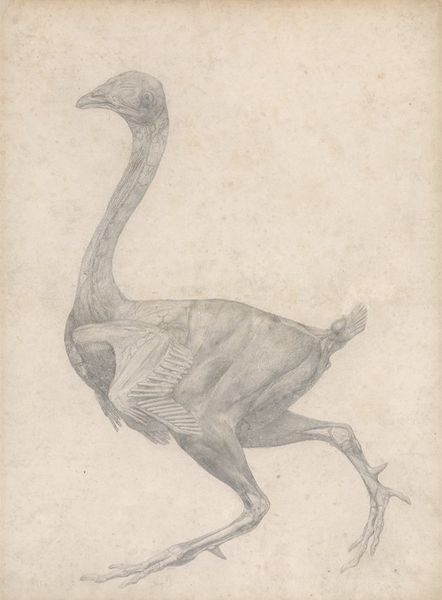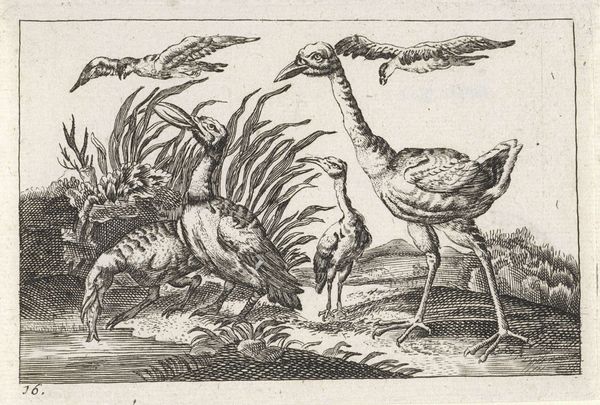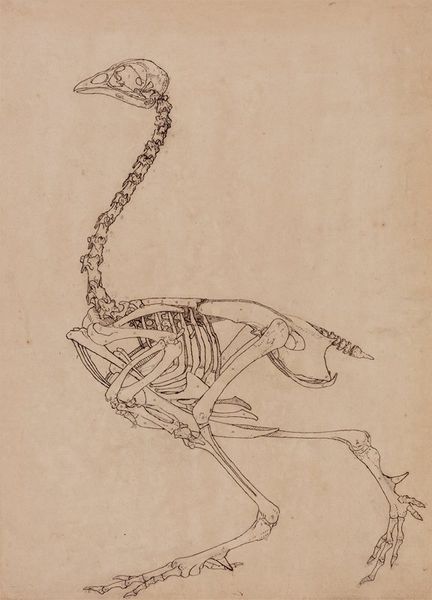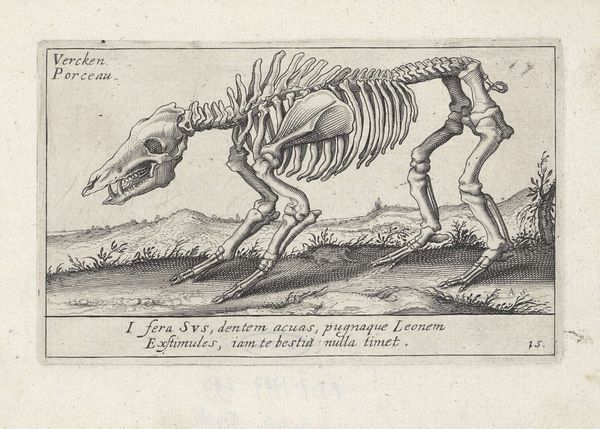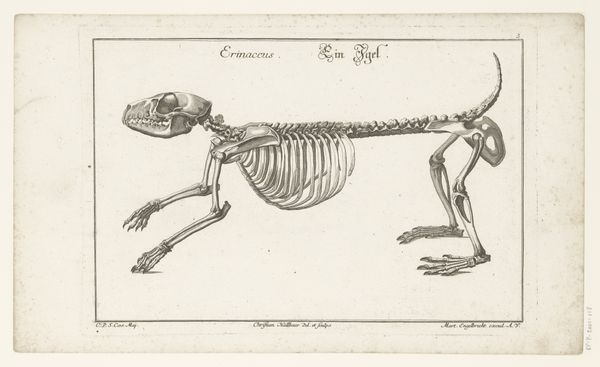
drawing, print, etching, engraving
#
drawing
#
baroque
# print
#
etching
#
mannerism
#
figuration
#
geometric
#
academic-art
#
engraving
Dimensions: height 155 mm, width 97 mm
Copyright: Rijks Museum: Open Domain
Editor: So, this etching is called "Skeleton of a Goose," created around 1625 by Hendrick Hondius I. What strikes me is how elegantly this artist has depicted a somewhat morbid subject! I wonder, what symbols and ideas jump out at you when you look at this image? Curator: Indeed, the image resonates deeply. The skeletal goose transcends a mere anatomical study, doesn’t it? It embodies "memento mori," a potent symbol in the 17th century. Think about how skeletons served as reminders of our mortality and the transient nature of life. Does this evoke feelings connected to loss? Editor: Yes, absolutely. But also perhaps, a kind of... stoicism? Given the scientific style. Curator: Precisely. Moreover, notice the inclusion of the goose. Across cultures, birds are often linked to the soul, freedom, and the journey between life and death. But a goose also has classical associations as a guardian, thanks to the geese who saved Rome. It complicates a straightforward message about mortality, wouldn’t you say? Editor: That's a fascinating contradiction. It's not just about death, but also memory and vigilance? Curator: Exactly. This echoes traditions where ancestors are seen as watchful protectors from beyond. Is it possible the Latin text could give clues? Do we read anything from this juxtaposition within a larger understanding of the period's views on science, religion and life’s cycle? Editor: The print suddenly feels much richer and more complex! Considering all that, seeing beyond the literal to understand cultural layers... it completely changes my perspective. Curator: And that’s the beautiful work of iconography! I wonder if our insights may lead to further inquiry and study?
Comments
No comments
Be the first to comment and join the conversation on the ultimate creative platform.
